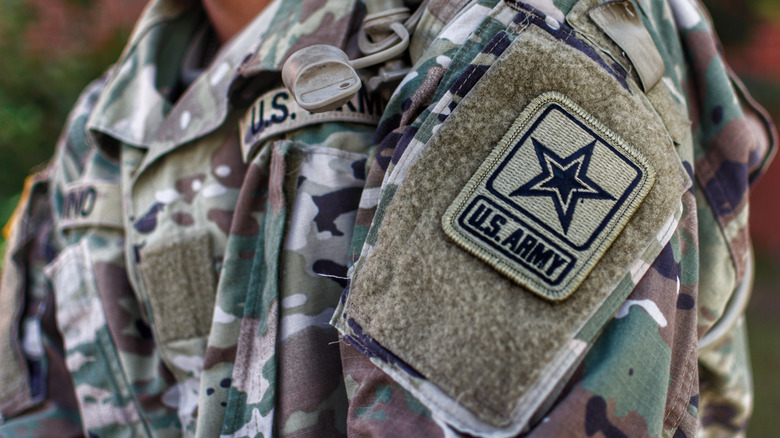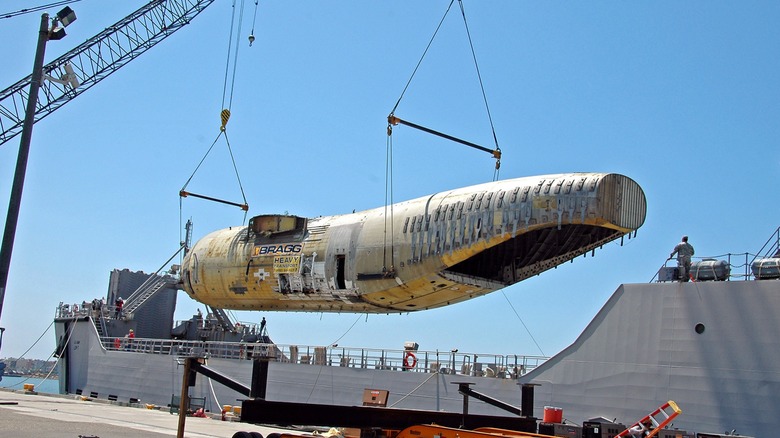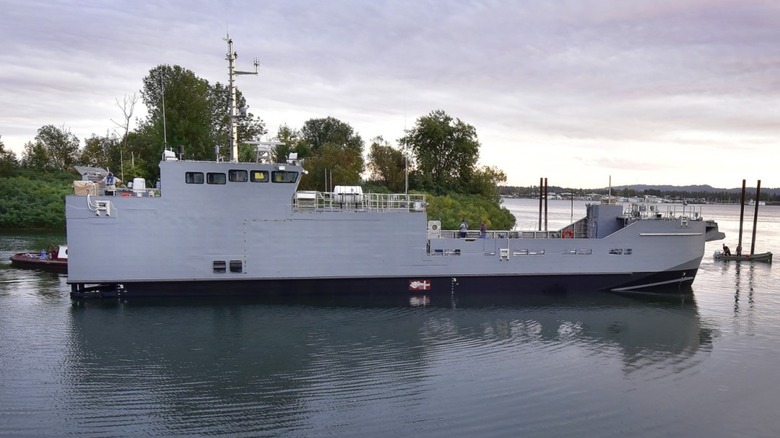Does The US Army Have Its Own Ships?
When the general public thinks about seagoing ships, the last branch of the United States military they think about is most likely the Army –maybe the Air Force. The Army's primarily known for being integrated of military drones, operating main battle tanks like the M1 Abrams, and even helicopters such as the Black Hawk and Apache. The most water soldiers have to endure is crossing a small river or a creek, right? Wrong. Soldiers encounter many waterways they need to cross, but more than that, they require seagoing ships to transport equipment and personnel. They don't just rely on Air Force cargo planes.
Which means the Army does have a fleet of its own ships, and it's much larger than you realize. This fighting force has fleets of landing crafts, tug boats, barges, dredges, logistic support vessels, and aircraft repair ships. Soldiers aren't challenging other vessels on the open seas, but its inventory isn't small by any means. The Army has 132 vessels for cargo and logistic purposes. That's nothing compared to the Navy's more than 240 warships, but it's not insignificant either.
Moreover, there are thousands of soldiers manning these vessels. Unlike the ships operated by the Navy for the U.S. Marine Corps, there are no sailors operating the Army's ships. They're technically soldiers, but they prefer the name "Army mariners." The service started mothballing many of its boat units in 2019 until Congress called for a study. By 2021, the Army's outlook on its watercraft changed and production has ramped up.
Logistic Support Vessels are the Army's largest ships
The United States Army has use of eight General Frank S. Besson-class Logistic Support Vessels — or, because the military loves them some abbreviations, LSV — that were built as early as 1987. These ships are used to transport equipment and vehicles all around the globe. The first six vessels built are 273-feet long and 60-feet wide, displacing 4,200 tons. There's a ramp at the bow of the ship that lowers, allowing personnel to drive vehicles aboard. There's also a crane for cargo pallets, containers, and if driving aboard simply isn't possible. Each of these ships can carry 2,000 short tons of cargo — enough for roughly 24 Abrams tanks. The ship can pull right onto a beach and lower its ramp for vehicles to quickly disembark onto land.
The two last ships built — the Robert T. Kuroda (LSV-7) and Major General Robert Smalls (LSV-8)– are 42-feet longer than their predecessors and have improved horsepower, can generate tons of fresh water, and have additional internal volume for crew. The LSVs are manned by roughly eight Warrant Officers and as many as 24 enlisted personnel.
"The flexibility and versatility of these strategic assets have helped build the great relationships we have with our joint and strategic partners supporting operations and training. The unique capabilities of organic platforms such as these gave commanders a flexibility not normally seen in the logistics field," Chief Warrant Officer 3 Mike Tolsma, sea mobility officer in charge, 1st TSC said in 2020 at an Army press briefing.
The Army also has a landing craft
The Army started working toward replacing some Vietnam-era craft in 2017, when Vigor Industrial started developing the new Maneuver Support Vessel. The newer vessel is strong enough to support modern equipment and combat vehicles, and the first new boat the service has acquired in over 20 years. As of this writing, the vessel's prototype is being tested in Hawaii, where it ferries soldiers, equipment, and supplies back and forth between Oahu and the main island. The Army intends to build 13 total Maneuver Support Vessels to carry supplies, personnel, and vehicles.
These vessels are much smaller than the Logistic Support Vessels at 117-feet long. Its 82 short tons will give it the ability to transport one formidable M1 Abrams battle tank, two Stryker combat vehicles, four light tactical vehicles, or a combination of all. It's obviously nowhere near as much as the larger vessel, but these Maneuver Support Vessels are intended to navigate inter-coastal areas, rivers and inland waterways, and in anti-access/area-denial environments where it's challenging, if not impossible, for the 273-foot vessels.
They can get up to 30 knots without cargo and around 21 knots when fully loaded. Even fully loaded, these small vessels will have a range of 360 nautical miles. Unlike the larger Logistic Support Vessels, the Maneuver Support Vessels only require a crew of eight Army mariners to operate.


